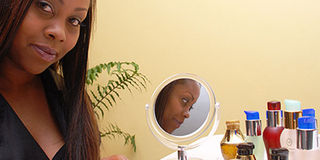How to test cosmetics to avoid reactions

Skin inflammation occurs when we use products that are incompatible with the skin’s natural pH . The pH of skin affects how healthy your skin looks and feels.
PHOTO/FILE
What you need to know:
To test the pH of products, you should purchase a few strips of litmus paper, widely available in chemists.
Follow the instructions on colour change to find out the correct pH of any of your products including soap, cleanser, toner, face cream, lotion and so forth.
OUR SKIN reacts differently to different products like cosmetics or even soap.
Skin inflammation occurs when we use products that are incompatible with the skin’s natural pH . The pH of skin affects how healthy your skin looks and feels.
So what is it? Potential hydrogen is the the measure of acidity and alkalinity in substances. Water is neutral with a pH of 7, meaning that it is neither acidic or alkaline, while that of our skin is around 5.5, meaning that it is slightly acidic.
It is important to select products which are as close as possible to the skins pH. Some soaps are highly alkaline and cause dryness and itching.
How to test
To test the pH of products, you should purchase a few strips of litmus paper, widely available in chemists.
Follow the instructions on colour change to find out the correct pH of any of your products including soap, cleanser, toner, face cream, lotion and so forth.
The ideal pH which will be less likely to affect your skin should be between 5.5 to 6. It is very important to consider the pH factor if you always have all manner of skin problems such as rashes, itching, pimples and lifeless looking skin.
The author is the national director of the safe skin care initiative. E-mail: [email protected]




